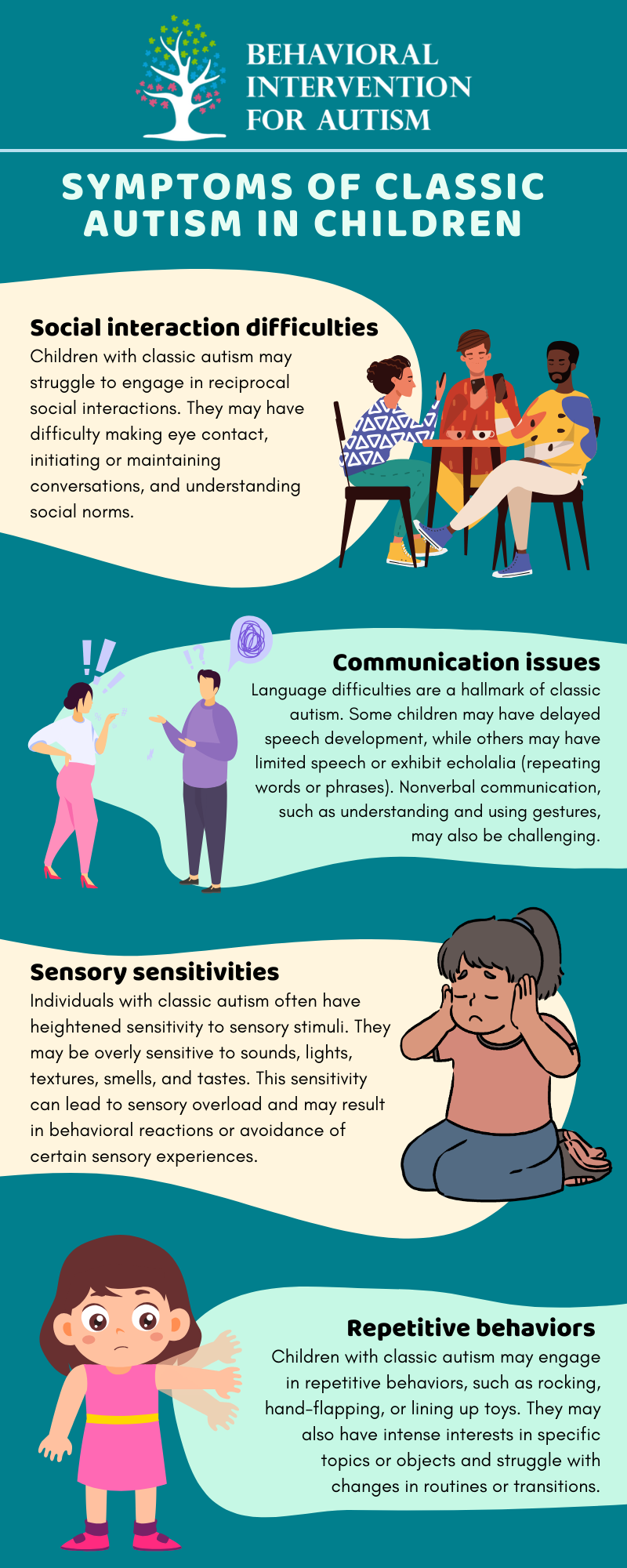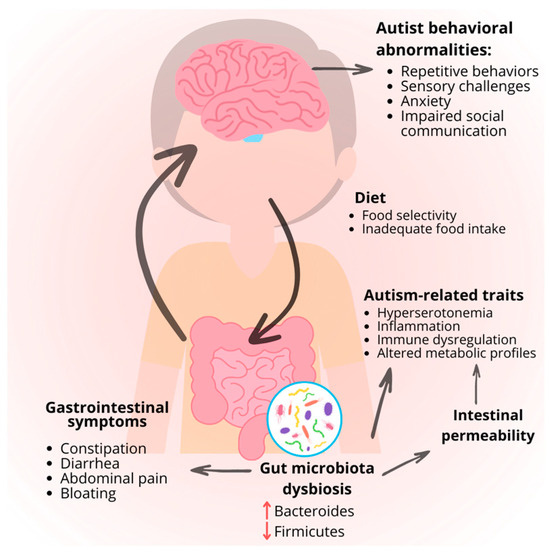Can Autism Behavioral Therapy deliver results? We explain
Can Autism Behavioral Therapy deliver results? We explain
Blog Article
Promoting Inclusivity: Just How to Create Helpful Atmospheres for Those With Behavioral Autism
Creating supportive environments for individuals with behavioral autism is vital for promoting inclusivity. You might wonder just how recognizing key characteristics and difficulties can lead the way for effective methods. By concentrating on compassion and interaction, you can make a considerable influence. What certain actions can you take to assure these people prosper in various setups? Allow's explore the methods that can result in purposeful change.
Comprehending Behavioral Autism: Trick Qualities and Obstacles
Comprehending behavior autism involves identifying its key attributes and the obstacles it presents. Individuals with autism usually exhibit troubles in social communication, interaction, and repeated habits. You may see that they struggle to analyze social hints, which can cause misconceptions in everyday situations. Sensory level of sensitivities are additionally usual, making sure settings overwhelming.

Supporting someone with behavioral autism means being patient and versatile. You'll require to develop a setting that lessens anxiety and promotes comfort. Acquainted regimens can aid, in addition to clear, regular interaction. Recognizing these characteristics will lead the way for extra reliable assistance and an extra comprehensive setting.
The Role of Compassion in Sustaining Individuals With Autism
Compassion plays a necessary function in supporting people with autism by helping you understand their special perspectives. By exercising energetic listening techniques, you can construct emotional links that foster trust fund and interaction - Aba Therapist. This understanding not only boosts your connection however also produces an extra helpful setting for them
Understanding Special Perspectives
When you take into consideration the one-of-a-kind viewpoints of people with autism, it comes to be clear just how essential compassion is in giving reliable assistance. Your capacity to understand permits you to develop a setting where they really feel secure, valued, and recognized. This helpful environment equips individuals with autism to express themselves, ultimately boosting their health and growth.

Active Paying Attention Strategies
Active paying attention methods play an important function in supporting people with autism, as they foster a much deeper link and understanding. Reword what they state to confirm your understanding, and ask open-ended concerns to motivate more expression. By exercising these methods, you create a safe room where people really feel heard and valued, inevitably improving their communication and psychological wellness.
Building Emotional Links
Developing a supportive environment through energetic paying attention naturally leads to developing emotional links with individuals on the autism spectrum. When you genuinely involve, you're not just hearing their words; you're understanding their sensations. This empathy promotes depend on, allowing them to share themselves freely. Use nonverbal cues, like eye contact and nodding, to show you exist and spent in their experiences.

Efficient Interaction Strategies for Inclusivity
Effective communication strategies play a crucial function in cultivating inclusivity for people with behavioral autism. Beginning by utilizing clear, basic language that's very easy to understand. Prevent idioms or abstract phrases; they can be complicated. Instead, be straight and specific regarding what you suggest.
Nonverbal cues are similarly crucial. Focus on your body language, faces, and intonation, as these can communicate even more than words. Maintain eye get in touch with and use gestures to boost understanding.
Additionally, hold your horses and offer people time to process information. Encourage them to share their ideas and sensations, revealing that their input is valued.
Active listening is important; repeat or paraphrase what they have actually said to verify understanding. Adjust your interaction techniques based on specific choices, whether it's via aesthetic help, created guidelines, or other tools. This personal touch strengthens incorporation and helps build significant links.
Tailoring Assistance Solutions in Educational Settings
In academic setups, you'll desire to focus on Individualized Education and learning Plans (IEPs) that accommodate each pupil's one-of-a-kind needs. Producing a sensory-friendly classroom style can also boost finding out by promoting and minimizing interruptions convenience. With each other, these techniques can promote an atmosphere where pupils with autism grow.
Individualized Education And Learning Plans
While steering with the complexities of autism in educational setups, Individualized Education and learning Plans (IEPs) play an essential function in tailoring assistance systems to fulfill each pupil's one-of-a-kind needs. It's essential to team up with educators, professionals, and your child to develop a thorough plan. Keep in mind, an efficient IEP is not simply a record; it's a living device that adapts to your child's advancing needs, ensuring they prosper in their educational setting.
Sensory-Friendly Classroom Layout
Developing a sensory-friendly class can substantially improve the learning experience for trainees with autism. Beginning by assessing your class's lighting; soft, natural light can reduce overstimulation. Incorporate adaptable seating options, like bean bags or flooring paddings, to allow trainees to find their convenience zone. Use relaxing shades on walls and decor to produce a relaxing ambience. Think about adding sensory edges with fidget devices, noise-cancelling earphones, or weighted blankets for trainees that require breaks. Arrange rooms to decrease mess, assisting trainees concentrate far better. Establish clear routines and signals to connect adjustments, alleviating stress and anxiety. By making these adjustments, you'll create a setting where students with autism feel extra sustained and participated in their knowing journey.
Producing Inclusive Workplaces for Individuals With Autism
To promote a truly inclusive workplace for individuals with autism, companies must acknowledge the one-of-a-kind strengths and difficulties these individuals bring. Start by advertising clear interaction and offering in-depth job descriptions that lay out assumptions. This helps individuals comprehend their roles better and decreases stress and anxiety.
Consider executing flexible job arrangements, such as remote job or adjusted hours, to fit numerous personal choices and sensory requirements. Educating your staff on autism awareness is crucial; it can improve compassion and promote a helpful atmosphere.
Developing silent spaces where workers can recharge throughout stressful minutes can additionally make a substantial distinction. Motivate using assistive technologies that help simplify jobs and improve efficiency.
Ultimately, valuing variety will certainly not only benefit individuals with autism yet will also improve the whole team, leading to a much more ingenious and vibrant workplace. Embrace these methods to grow a setting where every person can thrive.
Encouraging Social Interaction and Community Interaction
Motivating social interaction and neighborhood interaction is crucial for people with autism, as it aids construct self-confidence and cultivates purposeful partnerships. To develop an encouraging setting, beginning by supplying possibilities for people to link with others in a comfortable setting. Organize team tasks that satisfy various rate of interests, such as art classes, sports, or social work tasks.
You can additionally assist in smaller, structured gatherings where everyone can share their ideas and experiences. Urge open communication by modeling respectful listening and compassion. Developing peer mentorship programs can assist create bonds and provide guidance.
Entail family members and neighborhood organizations to broaden the assistance network and advertise inclusive occasions. Keep in mind, the key is to create secure areas where individuals with autism feel valued and understood. By fostering these links, you'll help them thrive socially and create a sense of belonging within the area.
Resources and Tools for Structure Supportive Settings
While building encouraging atmospheres for people with autism may appear challenging, a number of resources and devices can make the procedure much easier and a lot more effective. Initially, think about making use of visual assistances like schedules or social stories to aid individuals comprehend their social situations and everyday regimens. Applications designed for communication, such as AAC (Augmentative and Different Communication) devices, can additionally enhance interaction.
In addition, training programs for team and volunteers on autism recognition can advertise empathy and understanding in your community. Check out local organizations that offer resources or workshops tailored for supporting people with autism.
Creating sensory-friendly rooms with relaxing components-- like soft lights and silent locations-- can profit those who may become overwhelmed. Finally, developing links with neighborhood support system can offer ongoing guidance and feedback, aiding you improve your technique and assurance inclusivity for all.
Regularly Asked Concerns
How Can I Educate Others Concerning Behavioral Autism Successfully?
To inform others about behavior autism successfully, share personal tales, provide clear sources, and motivate open discussions - Autism Therapist. Usage check here relatable examples and highlight the importance of recognizing different viewpoints to promote empathy and recognition
What Prevail Misunderstandings About Autism That Required Dealing With?
You could believe autism just affects interaction skills, yet that's just one facet. Numerous think it's entirely a childhood years condition, when as a matter of fact, it spans throughout all ages and materializes differently for every person.
How Can I Support for Autism Awareness in My Neighborhood?
You can advocate for autism understanding by arranging community events, sharing informative resources, and teaming up with local organizations. Usage social media sites to spread the word, and motivate open discussions to foster understanding and acceptance.
Exist Details Sensory-Friendly Spaces for Individuals With Autism?
Yes, lots of areas offer sensory-friendly areas, like peaceful areas in libraries, specialized backyard, or assigned hours at galleries. You can discover local resources and advocate for even more comprehensive rooms to sustain individuals needing them.
What Function Do Household Members Play in Sustaining People With Autism?
Household members play a vital function in sustaining people with autism. You can give patience, encouragement, and understanding. By proactively taking part in their lives, you assist develop self-confidence and foster self-reliance, producing a nurturing atmosphere.
Producing supportive environments for individuals with behavior autism is essential for cultivating inclusivity.Developing an encouraging atmosphere with active listening normally leads to constructing psychological connections with individuals on the autism spectrum. Developing Inclusive Workplaces for People With Autism.
To promote a genuinely inclusive workplace for people with autism, employers must acknowledge the one-of-a-kind strengths and obstacles these people bring. Bear in mind, the trick is to produce risk-free spaces where people with autism feel valued and comprehended.
Report this page